What’s the Story Behind a Plant Name
Have you ever wondered how plants get their names? We’ll let you in on a little behind-the-scenes action here at Proven Winners and tell you how a few of our favorites were named.
We have a team of incredibly creative people here at Proven Winners headquarters and our perennial and shrub partners to thank for cranking their imaginations into high gear to dream up perfect names for our new varieties.
Kerry Meyer has been the namer-in-chief for the annual line of Proven Winners since 2002. Doesn’t that sound like a fun job? (Horticulture is fun!) Her creative wheels start spinning as soon as she sees a new plant for the first time. A plant’s flowers, shape, color or an outstanding characteristic offer clues to what it should be named.
Kerry finds inspiration all around her, from the local paint store to her cross-country travels. She keeps a database of over 3,000 plant name ideas that she and her team have brainstormed over the years. Sometimes it can be hard to think of something original, but eventually Kerry says she has an “ah-ha!” moment when she finds the perfect name for a new plant. That is a very good day!
The teams at Walters Gardens (Proven Winners® Perennials) and Spring Meadow Nursery (Proven Winners® ColorChoice® Shrubs) get to know their new introductions very well through the multi-year trialing and production process. Sometimes a name sticks from the very beginning. Other times, their preferred name for a new plant has already been used and they have to start all over again. Naming plants can be a very competitive business!
Can You Guess the Meaning Behind These Names?
You’ll find the clue behind these Egyptian-themed names in the botanical name Cyperus, which means “papyrus”. As early as 3,000 BC in ancient Egypt, papyrus was the most popular writing material in the world. The modern word “paper” comes from the ancient word papyrus. Egypt’s most famous king was King Tutankhamen, or King Tut. Ironically, King Tut papyrus has also become one of Proven Winners most iconic plants! We have our friends at Four Star Greenhouse to thank for these creative names. |
Sometimes the meaning behind a plant name isn’t so obvious. Take Rockin’® Deep Purple salvia, for instance. When we were brainstorming names for this new series, legendary rock artist Prince had just passed away and as huge fans, he was on all of our minds. This salvia’s flowers were strung on the stems like music notes and its garden performance in our trials had truly rocked. And so Rockin’ salvias were born on the inspiration of this iconic artist. We would have kept the Prince theme going all the way and named this salvia Rockin’® Purple Rain, but alas, that name was already taken by another plant. We were thankful when 80s hair band Deep Purple stepped up to finish the show. |
For a plant so versatile, this plant was surprisingly difficult to name. Nothing seemed to adequately describe their dependable all-season bloom performance, sun and shade tolerance, strong vigor and large flower size. Then, one day while Kerry was out driving around town doing errands, someone in a Pontiac Sunfire pulled right out in front of her and cut her off in traffic. The car’s name “Sunfire” was right in front of her—a little too close for comfort. But it spurred an idea. These dependable begonias with fiery red and pink flowers were bound to be a “surefire” hit with gardeners…and the ah-ha! moment struck! Surefire® begonias finally had a name, thanks to the rude driver who inspired Kerry that day. |
It’s pretty obvious how these super varieties of petunia got the name Supertunia®, but did you know that we have three named subseries of Supertunias? Their names give clues to how they grow. Supertunia Vista® petunias are broad spreading, tall, vigorous petunias that are the best varieties for filling large spaces or “vistas”. Vista = large expanse. Each Supertunia Vista petunia spreads up to three feet wide. Supertunia Vista® Bubblegum® is our #1 seller and is a former Annual of the Year. It is beloved by gardeners around the world.
|
Plant geeks like us use botanical names like Hypoestes when we talk about plants to avoid the confusion that can come from common names. When we found these new varieties that were extra-large and performed far better in the garden than old seed-grown Hypoestes, we knew we had to introduce them. We wanted an XL name to go with their XL personalities. Hypo…Hippo…you see where we were going there. We can get a little goofy when we’ve been working on naming plants for a little too long! |
|
What else would you call the very best variety of catmint you’d ever seen? After many years of hybridizing Nepeta, our perennial partner Walters Gardens created this new variety that stays densely mounded without having to give it a haircut halfway through the season. It is covered in sky blue flowers for months and pollinators obviously love it too. ‘Cat’s Meow’—defined in the Urban Dictionary as “the epitome of cool”--was an obvious choice to name this new superior variety. And you’ll love our next new catmint coming soon—‘Cat’s Pajamas’! |
Leading Lady bee balm varieties are refined, mildew-resistant, Monarda bradburiana hybrids that bloom at least a month earlier than the taller bee balms (Monarda didyma) you might have in your garden. Large, frilly petaled florets ring the button-like center of these showy flowers like a ruffled party dress. Their early debut in the garden plus their frilly flowers inspired the name Leading Lady. Three colors of Leading Lady bee balms will be available in 2019. |
To tell you the story behind the Invincibelle name, we should first explain how ‘Annabelle’ hydrangea came to be. History recounts how two sisters first discovered this hydrangea growing in the countryside near their town of Anna, Illinois way back in 1910. They thought it was very beautiful, so they shared it with friends and neighbors. Anna (town) + bella (beautiful) = ‘Annabelle’ hydrangea. ‘Annabelle’ has since become an iconic hydrangea that is grown all around the world. Wanting to build on that name recognition and reflecting on the practically bulletproof nature of a new pink-flowered, Annabelle-type hydrangea in their trials, our shrub partners at Spring Meadow Nursery chose the name Invincibelle®. The sale of Invincibelle® Spirit hydrangeas has since raised over $1 million for the Breast Cancer Research Foundation® and the donations continue to roll in. Many people who have bought this hydrangea for someone who has been affected by cancer tell us the name “Invincibelle Spirit” reflects their loved one’s attitude of perseverance to beat this disease. |
Any John Mellancamp fans out there? How about Culture Club or CCR groupies? Then you’ll certainly appreciate Tim Wood’s taste in music! As the new plant development manager at Spring Meadow Nursery, Tim and his team have all kinds of fun naming new plants after classic rock icons and records. Here are just a few: Sweet Emotion® Abelia, Happy Jack® Purple Clematis, Sister Golden Hair® Cytisus, White Album® Euonymus, Let’s Dance® Hydrangea, Good Vibrations® Gold Juniperus, Instant Karma® Sambucus, Proud Berry® Symphoricarpos, and Lil’ Ditty® Viburnum. |



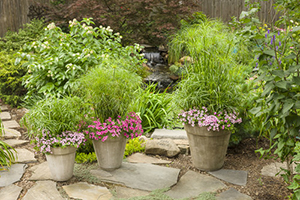
 Rockin’® Salvias
Rockin’® Salvias Surefire® Begonia
Surefire® Begonia
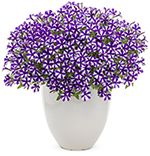 Supertunia Charm petunias
Supertunia Charm petunias Supertunia® Trailing petunias
Supertunia® Trailing petunias Hippo® Polka Dot Plant (Hypoestes)
Hippo® Polka Dot Plant (Hypoestes)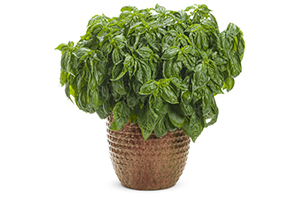
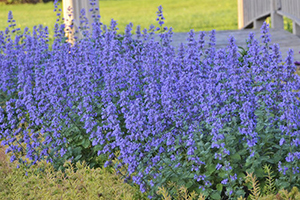 ‘Cat’s Meow’ Catmint (Nepeta)
‘Cat’s Meow’ Catmint (Nepeta)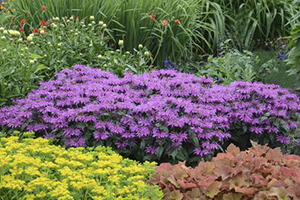 Leading Lady Bee Balm (Monarda)
Leading Lady Bee Balm (Monarda)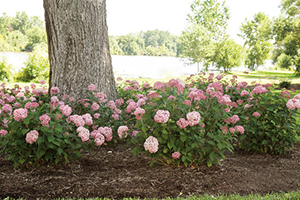 Invincibelle® Hydrangeas (Hydrangea arborescens)
Invincibelle® Hydrangeas (Hydrangea arborescens)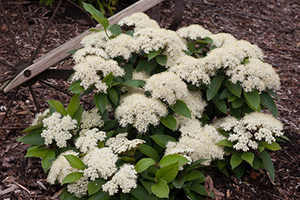 Classic Rockin’ Shrubs
Classic Rockin’ Shrubs
